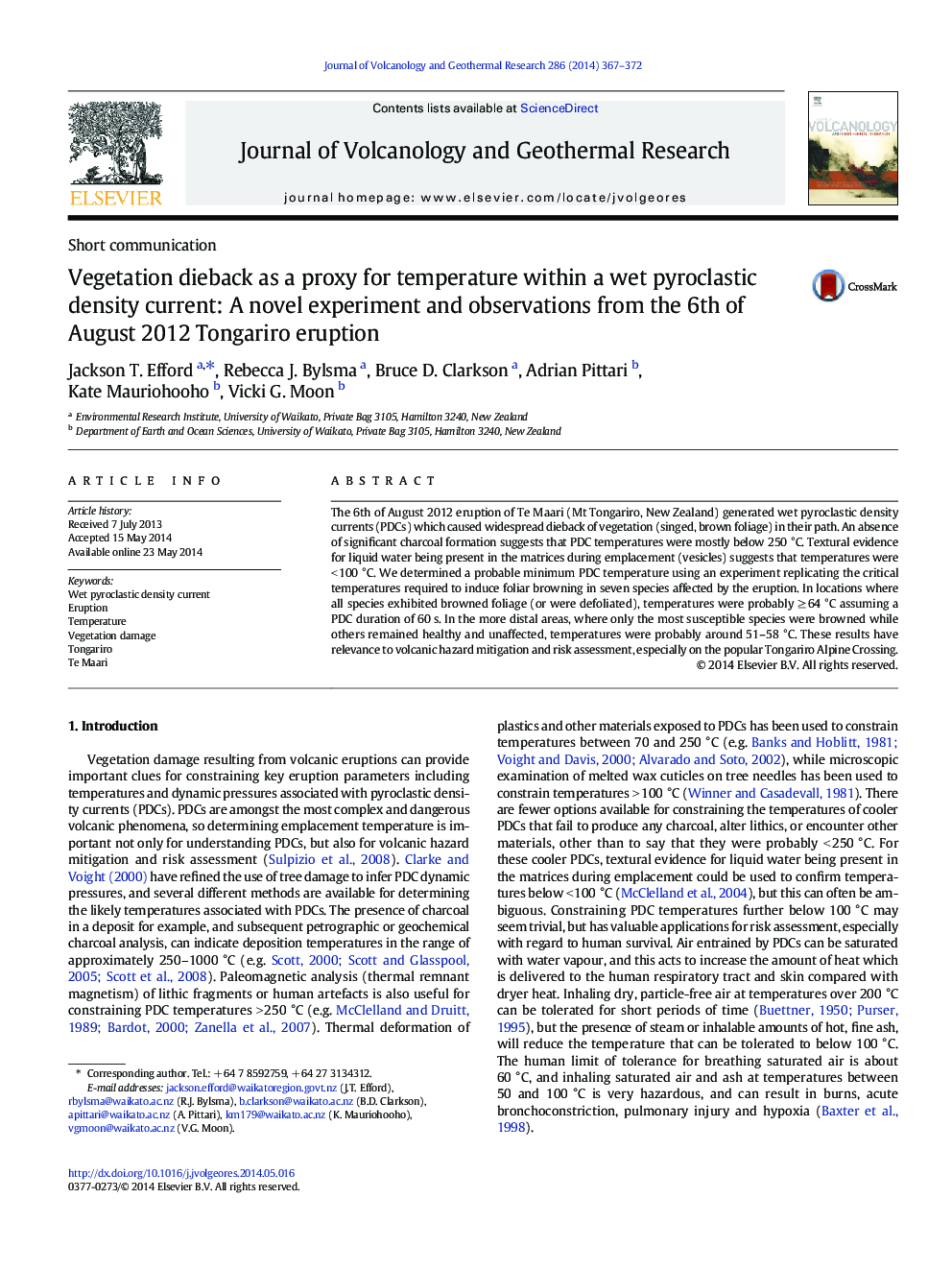| Article ID | Journal | Published Year | Pages | File Type |
|---|---|---|---|---|
| 6439693 | Journal of Volcanology and Geothermal Research | 2014 | 6 Pages |
â¢The August 2012 eruption of Te Maari generated wet pyroclastic density currents.â¢Density currents caused widespread vegetation dieback, characterised by browned foliage.â¢We used a novel leaf browning experiment to constrain density current temperatures.â¢Density current temperatures were probably â¥64°C but <250°C.
The 6th of August 2012 eruption of Te Maari (Mt Tongariro, New Zealand) generated wet pyroclastic density currents (PDCs) which caused widespread dieback of vegetation (singed, brown foliage) in their path. An absence of significant charcoal formation suggests that PDC temperatures were mostly below 250 °C. Textural evidence for liquid water being present in the matrices during emplacement (vesicles) suggests that temperatures were < 100 °C. We determined a probable minimum PDC temperature using an experiment replicating the critical temperatures required to induce foliar browning in seven species affected by the eruption. In locations where all species exhibited browned foliage (or were defoliated), temperatures were probably â¥Â 64 °C assuming a PDC duration of 60 s. In the more distal areas, where only the most susceptible species were browned while others remained healthy and unaffected, temperatures were probably around 51-58 °C. These results have relevance to volcanic hazard mitigation and risk assessment, especially on the popular Tongariro Alpine Crossing.
